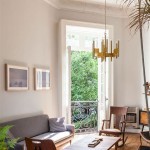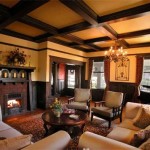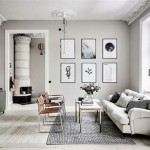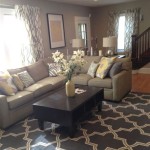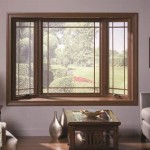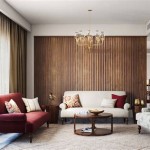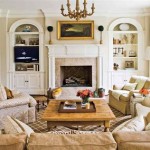Elevating Your Living Space: Creative Living Room Shelf Decor Ideas
Living room shelves are more than just storage solutions; they are integral parts of the room’s overall aesthetic. Devoid of purposeful styling, shelves can become cluttered and detract from the intended ambiance. Thoughtful decoration transforms them into visually appealing focal points, reflecting personal style and adding character to the living space. This article explores various approaches to shelf styling, offering insights into creating balanced, harmonious, and captivating displays.
Balancing Form and Functionality
The first step in decorating living room shelves is to consider the interplay between aesthetics and utility. While decorative elements are crucial, the shelves should also serve a practical purpose. This balance prevents the shelves from becoming purely ornamental and ensures their continued relevance within the living room.
Functional items such as books, storage boxes, and decorative bowls can be seamlessly integrated into the design. Organizing books by color or size, for example, adds visual interest while offering easy access to reading material. Storage boxes, in complementary colors or textures, can conceal less visually appealing items, maintaining a clean and organized appearance. Decorative bowls can hold smaller objects like keys, remotes, or potpourri, combining functionality with aesthetic appeal.
The key lies in selecting functional items that also contribute to the overall aesthetic theme. For instance, choosing books with aesthetically pleasing covers, or selecting storage boxes with interesting patterns or textures. This approach ensures that every element on the shelf serves a purpose, both practically and visually. Avoiding an overabundance of purely decorative items and strategically incorporating functional elements prevents the shelves from appearing cluttered or impractical.
Creating Visual Harmony Through Styling Techniques
Achieving visual harmony on living room shelves involves the application of several styling techniques. These techniques focus on creating a balanced and visually appealing arrangement that draws the eye and complements the surrounding decor.
One fundamental technique is the principle of the "rule of thirds." This involves dividing the shelf space into thirds, both horizontally and vertically, and placing key decorative items at the intersection points. This creates asymmetry, which is generally more visually interesting than symmetrical arrangements. Grouping items in odd numbers – typically three or five – also contributes to a more dynamic and balanced composition.
Varying the height and depth of objects is crucial for creating visual interest. Placing taller items at the back of the shelf and shorter items in front adds dimension and prevents the display from appearing flat. Using risers or stacks of books can elevate smaller objects, making them more prominent. Layering items, such as placing a framed photograph in front of a stack of books, adds depth and complexity to the arrangement.
Color coordination is another important consideration. Choosing a color palette that complements the room's overall decor creates a cohesive and harmonious look. Repeating colors throughout the shelf display helps to unify the arrangement. However, introducing pops of contrasting color can add visual interest and prevent the display from becoming monotonous. Texture also plays a significant role, with the integration of different materials like wood, metal, glass, and ceramics adding depth and visual appeal to the shelving unit. Careful consideration of these elements ensures that the arrangement is visually harmonious and aesthetically pleasing.
Incorporating Personal Style and Meaningful Objects
Living room shelves offer an excellent opportunity to express personal style and showcase meaningful objects. Incorporating items that reflect personal interests, hobbies, and memories adds character and individuality to the living space. This transforms the shelves from mere storage units into personalized displays that tell a story.
Photographs are a classic way to personalize shelves. Displaying framed photos of family, friends, and travel experiences adds a personal touch and evokes positive memories. Choosing frames that complement the overall aesthetic of the room ensures that the photographs blend seamlessly into the decor. Incorporating vintage photographs or black and white prints can add a touch of nostalgia and sophistication.
Objects collected during travels can also be incorporated into the shelf display. Souvenirs, artwork, and artifacts from different cultures add visual interest and reflect personal experiences. These items can serve as conversation starters and evoke memories of past adventures. Integrating these items with other decorative objects creates a unique and personalized display that reflects individual tastes and experiences.
Books, beyond their functional purpose, can also reflect personal interests and passions. Displaying favorite books, art books, or cookbooks adds character and provides insight into individual preferences. Arranging books by subject or author adds visual interest and reflects a curated collection. Combining photographs, travel souvenirs, and personal books creates a shelf display that is both visually appealing and deeply personal.
Leveraging Lighting to Enhance Shelf Displays
Strategic lighting can significantly enhance the visual impact of living room shelves. Proper illumination highlights key decorative elements, adds depth and dimension, and creates a more inviting ambiance. Integrating lighting into shelf decor is a nuanced process but can elevate the overall appearance considerably.
One effective method is to use integrated shelf lighting, which is built directly into the shelving unit. LED strip lights, for example, can be discreetly installed along the edges of the shelves, providing a soft and even glow. These lights highlight the objects on display and create a warm and inviting atmosphere. Integrated lighting is particularly effective for showcasing artwork, collectibles, or other decorative items that deserve special attention.
Another approach involves using standalone lamps placed strategically near the shelves. Table lamps or floor lamps can cast light onto the shelves, creating a focus point and adding depth to the room. Choosing lamps with adjustable arms allows for directing the light onto specific areas of the display, highlighting individual objects or creating dramatic shadows. Selecting lamps that complement the overall aesthetic of the room ensures that the lighting fixtures blend seamlessly into the decor.
Spotlights can also be used to highlight specific objects on the shelves. Small, adjustable spotlights can be mounted on the ceiling or on the shelves themselves, directing light onto key decorative elements. This technique is particularly effective for showcasing artwork, sculptures, or other valuable items. The careful use of spotlights can draw the eye and create a sense of drama and sophistication.
Careful consideration of the color temperature of the light is also important. Warm white light (2700-3000K) creates a cozy and inviting atmosphere, while cool white light (4000-5000K) provides a more modern and energizing feel. Choosing the appropriate color temperature depends on the overall aesthetic of the room and the desired ambiance. Combining different types of lighting, such as integrated shelf lighting with standalone lamps and spotlights, allows for creating a layered and dynamic lighting scheme that enhances the visual impact of the shelf display.
Utilizing Negative Space for Visual Relief
Negative space, or the empty areas around and between objects, is a crucial element in creating balanced and visually appealing living room shelves. Overcrowding shelves with too many items can create a cluttered and overwhelming appearance. Strategic use of negative space provides visual relief, allowing individual objects to stand out and preventing the display from feeling chaotic.
One effective approach is to leave intentional gaps between groups of objects. This creates a sense of airiness and allows the eye to rest. Grouping items in clusters, rather than scattering them evenly across the shelves, can also help to define the negative space and create a more organized and intentional look. Varying the size and shape of the objects within each cluster adds visual interest and prevents the display from becoming monotonous.
The background of the shelves can also contribute to the overall sense of negative space. Painting the back of the shelves a different color than the walls can create a visual contrast, making the objects on display stand out more prominently. Wallpapering the back of the shelves can add texture and visual interest, while keeping the color palette simple and neutral ensures that the display remains uncluttered.
The key is to strike a balance between filling the shelves with enough objects to create visual interest and leaving enough empty space to prevent the display from feeling overcrowded. Experimenting with different arrangements and layouts is essential for finding the right balance. Regularly decluttering the shelves and removing items that are no longer needed or that do not contribute to the overall aesthetic can also help to maintain a sense of negative space and prevent the display from becoming cluttered over time. Thoughtful utilization of negative space allows each object to breathe and enhances the overall visual impact of the shelf display.
Incorporating Greenery and Natural Elements
Integrating greenery and natural elements into living room shelf decor adds a touch of freshness, vitality, and organic beauty to the living space. Plants, flowers, and natural materials can soften the hard lines of shelves and create a more inviting and relaxing atmosphere. These elements introduce texture, color, and a sense of connection to the natural world.
One popular approach is to incorporate potted plants of various sizes and types. Trailing plants, such as pothos or ivy, can cascade over the edges of the shelves, adding a touch of whimsy and visual interest. Succulents and cacti are low-maintenance options that add texture and color without requiring frequent watering. Larger plants, such as snake plants or ZZ plants, can be placed on the lower shelves to add height and visual weight. Choosing pots that complement the overall aesthetic of the room ensures that the plants blend seamlessly into the decor.
Fresh flowers are another excellent way to add a touch of natural beauty to the shelves. Arranging flowers in vases of different shapes and sizes can create a visually appealing display. Choosing flowers that complement the room's color palette adds harmony and coherence. Regularly replacing the flowers with fresh blooms ensures that the display remains vibrant and visually stimulating.
Natural materials, such as wooden bowls, woven baskets, and stone objects, can also be incorporated into the shelf decor. These materials add texture and warmth, creating a more inviting and organic feel. Shells, driftwood, and other natural objects collected from beaches or forests can add a personal touch and evoke memories of past experiences. Combining plants, flowers, and natural materials creates a shelf display that is both visually appealing and deeply connected to the natural world.
Regularly Refreshing and Reimagining Shelf Decor
The beauty of living room shelf decor lies in its adaptability and potential for continuous transformation. Regularly refreshing and reimagining the shelf display keeps the living space dynamic and reflects evolving tastes and preferences. This practice prevents the shelves from becoming stale and ensures that they continue to serve as a source of visual inspiration.
One simple way to refresh the shelf decor is to rotate the objects on display. Periodically swapping out items with others from around the house or from storage can create a fresh and new look without requiring any new purchases. This allows for showcasing different objects and preventing the display from becoming monotonous. Experimenting with different arrangements and layouts can also invigorate the shelf decor and create new visual interest.
Seasonal changes provide an excellent opportunity to reimagine the shelf decor. Incorporating seasonal colors, textures, and motifs can reflect the changing seasons and create a more festive atmosphere. In the fall, for example, adding pumpkins, gourds, and autumnal foliage can create a warm and cozy ambiance. In the winter, incorporating candles, pine cones, and holiday decorations can create a festive and inviting space. Adapting the shelf decor to reflect the changing seasons keeps the living space dynamic and connected to the natural world.
Personal milestones and life events can also inspire changes to the shelf decor. Incorporating new photographs, souvenirs, or artwork acquired during travels or celebrations can reflect personal experiences and add a meaningful touch to the display. Rearranging the shelves to create a new focal point or to highlight a particular object can also mark a significant occasion. Regularly refreshing and reimagining the shelf decor allows for expressing personal style and reflecting evolving tastes and preferences.

12 Tips And Secrets For How To Decorate Shelves A Free Checklist Worthing Court Diy Home Decor Made Easy

Shelves In The Living Room Stonegable

12 Expert Shelf Decor Ideas How To Style Them Like A Pro The Unlikely Hostess

The 40 Best Shelf Decor Ideas For A Stylish Home Joyful Derivatives

20 Shelf Decor Ideas For Every Room In The Home Saffron Marigold

12 Expert Shelf Decor Ideas How To Style Them Like A Pro The Unlikely Hostess

How To Decorate Shelves In 5 Easy Steps Abby Organizes

680 Decorating Shelves Ideas Home Decor

Little Decor Ideas For Big Impact Style Those Open Shelves Diy Home

My Go To Fomula For Beautiful Shelf Styling Natalie Yerger

